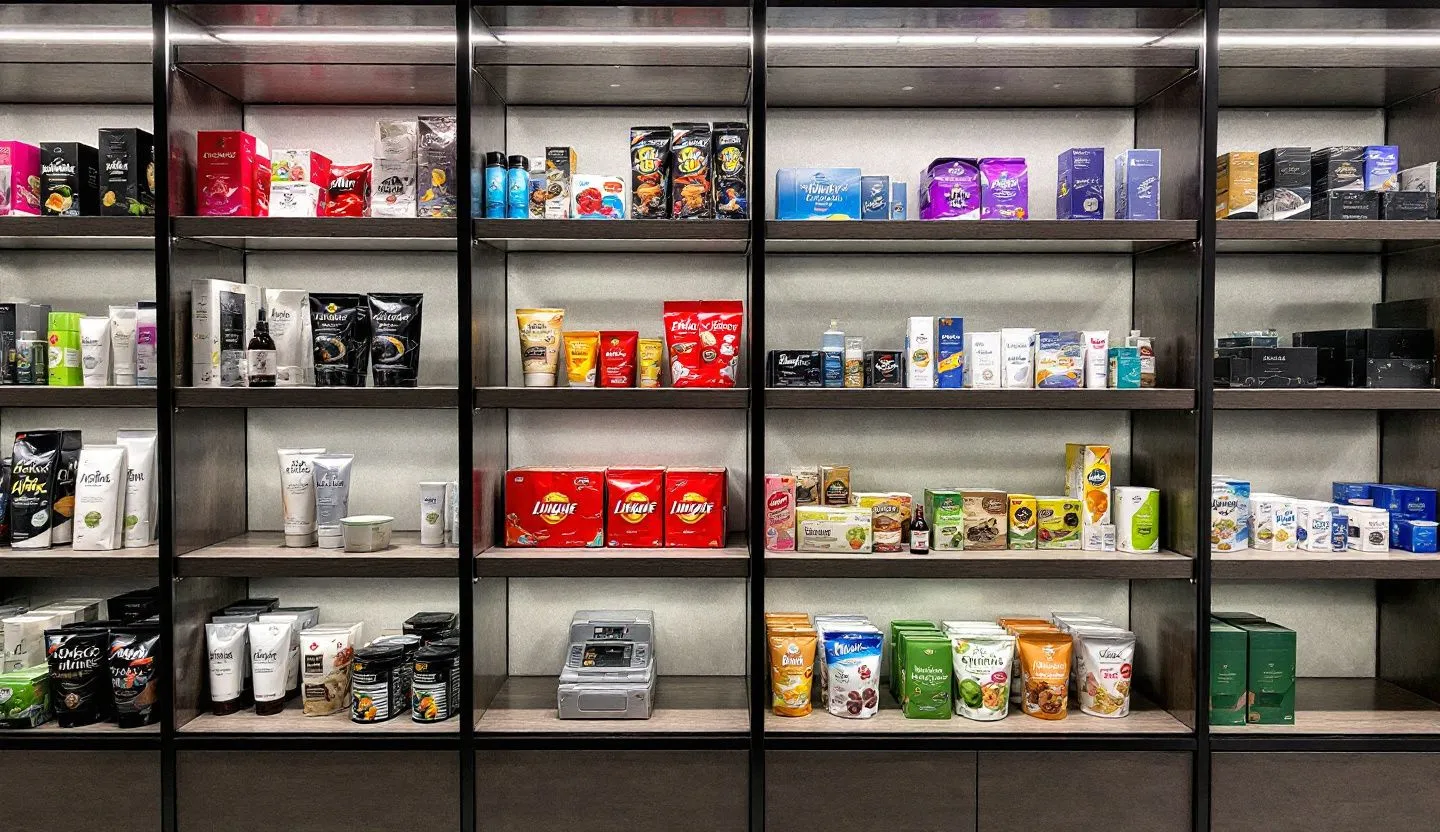Let’s be honest: building and protecting a brand at enterprise scale has never been simple, but the pressure is different now. Maybe you’ve felt it too. The old ways of managing brand consistency and campaign speed just aren’t holding up. Every week brings a new tool, channel, risk, or compliance wrinkle. Your creative team is stretched, your marketers demand more autonomy, and your IT and legal partners are,rightfully,wary of security and risk.
We want to deliver experiences that connect, move fast, and stay compliant. Yet, the tension between agility and control is real. How do you scale content, stay on-message, and still create meaningful connections with customers who expect the personal touch of a startup from an enterprise-sized brand? For years, we juggled with patchwork solutions and siloed teams. But the landscape is shifting. The next wave of brand strategies for 2025 is here, and it’s reshaping how we think about everything from AI to authenticity.
Below, I’ll break down the seven trends redefining enterprise brand strategy this year. You’ll see why these changes matter, how to make them work for your team, and what’s newly possible when you embrace them.
The demand for real personalization is accelerating
We’re living in a world where personalization is no longer a “nice-to-have.” Our audiences expect every interaction to feel tailored, whether they’re reading an email, seeing a display ad, or interacting with support. But in enterprise marketing, personalization can feel daunting. Legacy systems don’t always play nicely together. Data sits in silos. And the scale of “personal” at global reach is intimidating.
AI-powered personalization is moving from buzzword to baseline
- The shift: AI is changing the personalization game. In the past, we relied on segmentation,grouping users by broad characteristics. Now, AI lets us move toward truly individualized experiences. Machine learning models analyze behavior, purchase history, and real-time engagement to recommend content, products, and even the right tone of messaging. As an enterprise marketer, I’ve seen firsthand how these tools can transform generic campaigns into dynamic journeys.
- The solution: Leading organizations are investing in integrated martech stacks where AI tools are not bolted on, but built in. Platforms like Salesforce Einstein, Adobe Sensei, and even custom LLM solutions are helping teams deliver the right message to the right user, across touchpoints, with remarkable efficiency. For example, a global financial services brand I worked with recently used AI to personalize onboarding emails for different customer segments, lifting engagement rates by 28% within a quarter.
- The outcome: AI-powered personalization isn’t just about higher open rates. It’s about building trust and loyalty at scale, while freeing up creative teams to focus on strategy and storytelling, not manual segmentation. The brands that do this well in 2025 will not only see better numbers, they’ll become the gold standard for customer experience in their industry.

Brand governance is evolving from rigid rules to adaptive frameworks
For years, brand governance meant thick PDF guidelines and a compliance officer policing every asset. But let’s face it, that model doesn’t work when you have hundreds of marketers, dozens of agencies, and a new campaign launching every week. The old way slows us down and frustrates everyone.
Adaptive brand governance enables speed without sacrificing control
- The shift: Brand governance is moving from “command and control” to “connect and empower.” Instead of locking down assets, we’re seeing the rise of dynamic brand management platforms and adaptive frameworks. These systems provide just enough guardrails to ensure consistency, but enough flexibility for teams to move quickly.
- The solution: Platforms like Desygner, Frontify, and Bynder offer centralized asset libraries, real-time brand guidelines, and approval workflows. They’re not just digital binders; they’re living ecosystems where compliance, creative, and marketing ops collaborate. In one Fortune 100 tech company I advised, moving to an adaptive brand governance platform cut asset approval time by 40%, while reducing off-brand usage incidents by more than half.
- The outcome: Adaptive brand governance means faster speed to market, less brand risk, and happier teams. It’s about enabling, not restricting, creativity. By giving your teams the tools and trust to execute, you can maintain brand integrity without becoming the bottleneck.

Content velocity is the new differentiator
Every enterprise is now a content company. We’re producing more assets, for more channels, at a faster pace than ever. But the pressure to “do more, faster” often leads to a messy sprawl of inconsistent creative, outdated assets, and brand dilution. The challenge is real: how do you keep up the pace without losing control?
Scalable content operations drive both speed and quality
- The shift: The conversation is moving from “how do we make more content?” to “how do we make more effective content, at scale, without chaos?” Content operations is now a strategic function, not just a production line. Enterprise teams are investing in workflows, templates, and automation to keep the engine running smoothly.
- The solution: Smart brands are building modular content systems,think reusable blocks, dynamic templates, and automated compliance checks. For instance, a global CPG brand I worked with implemented a digital asset management (DAM) solution tied to automated version control. Marketers could quickly assemble campaign assets from approved modules, reducing turnaround time by 60% and virtually eliminating out-of-date creative in market.
- The outcome: With scalable content operations, you get the holy grail: speed and consistency. Your teams launch faster, stay on-brand, and adapt to market changes in real time. Plus, legal and compliance partners finally get the transparency they need, without becoming the “no” department.
Data privacy and compliance are now core to brand trust
Let’s talk about the elephant in the boardroom: data privacy. With new regulations, from GDPR to CCPA to China’s PIPL, the stakes for compliance have never been higher. One misstep can damage years of hard-earned trust,and the legal, financial, and reputational fallout can be severe.
Proactive compliance is shaping brand strategies, not just protecting them
- The shift: Compliance is no longer just about avoiding fines. In 2025, it’s an essential pillar of brand trust. Customers care deeply about how their data is handled, and enterprise marketers are expected to champion responsible practices. That means working hand in glove with legal, IT, and risk teams from day one.
- The solution: Best-in-class brands are embedding compliance into every layer of their martech stack. This includes automated consent management, real-time auditing, and data localization solutions. One healthcare brand I advised recently launched a global campaign using privacy-by-design workflows. Every asset was reviewed for regional compliance before launch, reducing the risk of regulatory headaches and reinforcing their reputation as a trustworthy partner.
- The outcome: When compliance is proactive, not reactive, you gain a competitive edge. Customers feel safer, regulators see you as a model citizen, and your internal teams spend less time firefighting. In 2025, brands that treat privacy as a core value will win both trust and market share.

Purpose-driven storytelling is moving from slogan to substance
Customers are savvy. They can spot performative purpose from a mile away. For years, brands have talked about values, but in 2025, it’s about living them. Storytelling that’s rooted in authentic purpose is what sets apart brands people want to buy from,and work for.
Authentic storytelling builds lasting connections
- The shift: The market is saturated with content, but what cuts through is genuine, purpose-driven stories. Brands are moving beyond “mission statements” to showing real impact,whether that’s sustainability, DEI, or community engagement. Employees, customers, and partners all expect to see values in action, not just on posters.
- The solution: Leading enterprises are investing in content that highlights real stories: employee spotlights, customer journeys, social impact initiatives. For example, a major logistics company recently launched a global storytelling series featuring frontline workers driving sustainability efforts. The campaign boosted both customer engagement and internal pride,proving that purpose pays dividends across audiences.
- The outcome: When you tell authentic, values-driven stories, you humanize your brand and build emotional equity. People want to be associated with brands that stand for something real. In a crowded market, that’s how you create lasting preference and loyalty.
The next-gen DAM for enterprise
Get more than just storage. Get the DAM that dramatically improves content velocity and brand compliance.Brand consistency needs to be everywhere, not just in campaigns
If you’ve ever cringed at seeing your logo stretched or your color palette mangled, you’re not alone. Consistency isn’t just about aesthetics,it’s about trust. Yet, in a world of distributed teams, global partners, and constant channel churn, keeping your brand consistent is harder than ever.
Omnichannel brand management is the new expectation
- The shift: Enterprise brands are realizing that consistency must extend beyond marketing campaigns to every touchpoint: product, service, support, and even internal communications. Customers don’t see departments or org charts; they see one brand, everywhere.
- The solution: The smartest organizations are deploying omnichannel brand management systems that unify guidelines, assets, and messaging across all teams and channels. This includes everything from templated sales decks to customer onboarding kits and even partner enablement materials. At a recent enterprise I worked with, a centralized brand hub allowed every business unit,marketing, sales, HR, even IT,to access the latest approved assets, drastically reducing off-brand moments.
- The outcome: Omnichannel consistency builds trust with every interaction. It signals professionalism, reliability, and care. When every touchpoint feels cohesive, customers and employees alike become advocates, not just users.

Integration and security are essential for scalable brand strategies
Every enterprise brand leader knows the pain of tangled martech stacks. Disconnected tools slow everyone down, invite errors, and increase risk. Worse yet, security gaps can expose sensitive data or create compliance nightmares. In 2025, seamless integration and robust security aren’t just IT’s job,they’re core to brand strategy.
Integrated, secure platforms drive enterprise brand success
- The shift: Brand strategies now hinge on technology that’s both connected and secure. Siloed solutions are giving way to integrated platforms where DAM, creative automation, approval workflows, and analytics all work together. At the same time, enterprise-grade security is table stakes, not an afterthought.
- The solution: Forward-thinking brands are partnering closely with IT, legal, and risk teams to evaluate tools that meet rigorous security and integration standards. Single sign-on (SSO), SOC 2 compliance, and robust APIs are no longer “nice-to-haves”,they’re requirements. For example, a global insurance company I supported recently unified their creative workflow and compliance checks into one secure platform, slashing manual handoffs and tightening brand control.
- The outcome: Integrated, secure brand operations mean faster execution, fewer errors, and less risk. Your teams can focus on creativity and strategy, knowing the infrastructure has their back. And when regulators or auditors come knocking, you’re ready with transparency and control.
Partnerships and ecosystems are the next frontier of brand growth
No brand is an island. In 2025, the brands that win are those who build strong partner ecosystems,agencies, resellers, influencers, and even other brands. The challenge? Managing brand integrity and consistency across a sprawling network, without bottlenecking growth.
Ecosystem enablement unlocks brand reach at scale
- The shift: The partner landscape is more complex than ever. Enterprises are moving from “control at the center” to “enablement at the edge.” Instead of policing partners, leading brands empower them with the right tools, training, and assets to activate the brand everywhere.
- The solution: Best-in-class brands are rolling out partner portals and co-marketing kits with clear guidelines, pre-approved creative, and easy-to-use templates. One global software company I worked with created a self-service portal where partners could customize campaign assets within set parameters,ensuring compliance, but also enabling local relevance. The result was a 3x increase in partner-led campaign launches, with far fewer compliance headaches.
- The outcome: When you empower your ecosystem, your brand grows faster and further, without sacrificing control. Partners become true brand advocates, driving demand and loyalty in markets you could never reach alone.
The brand strategies landscape for 2025 is not about choosing between speed, scale, or control,it’s about designing systems where you get all three, without compromise. As enterprise marketers, we’re living the tension between moving fast and staying true to our brand DNA. The trends shaping this year,AI-powered personalization, adaptive governance, content velocity, proactive compliance, authentic storytelling, omnichannel consistency, integrated security, and ecosystem enablement,aren’t just buzzwords. They’re the new standards for brand leadership at scale.
What’s exciting is how these changes are making our jobs not just more complex, but more meaningful. We’re not just protecting logos; we’re building trust, telling stories that matter, and enabling our teams to create at the speed of culture. With the right brand strategies, technology, and mindset, we can meet the demands of today’s market while staying ahead of tomorrow’s curve. The outcome? Brands that are not only more resilient and agile, but more human,delivering experiences that customers remember, and teams are proud to build.







